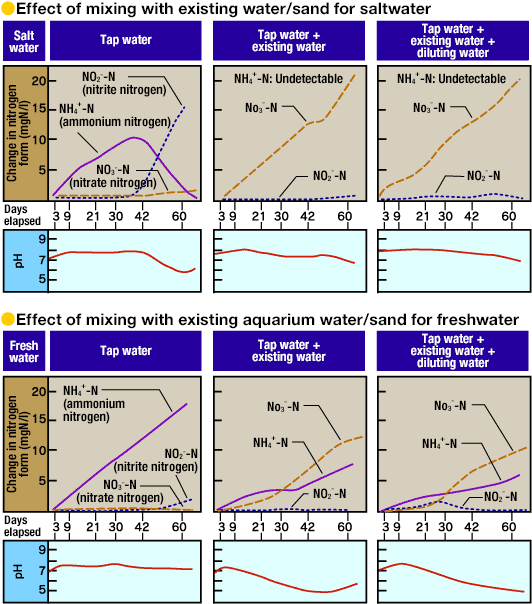| The above graphs show test results for the nitrification increase when one liter of Power House is combined with 2% existing sand on the one hand and with 2% existing sand and 10% existing aquarium water on the other. |
| (Saltwater is artificially made and fresh water is taken from tap water.) |
|
 |
● Test results for both saltwater and freshwater
- (1)
- No mixing method is used.
Nitrification begins around the third week.
|
- (2)
- Only existing sand is used.
Nitrification begins around the first week.
|
- (3)
- Both existing sand/aquarium water are used.
Nitrification begins around the third day.
|
| Test results show that nitrification activity begins fastest in number 3 above, followed by number 2, and then number 1. |
 |
| Note: It is thought that more ammonium and less nitrite were detected in the freshwater starting around the third week because nitrification had been promoted up to that point, lowering water pH, which in turn caused nitrifying bacteria (nitrosomonas) that convert ammonia into nitrous acid to fall outside the suitable range and harm their activity. |
|



